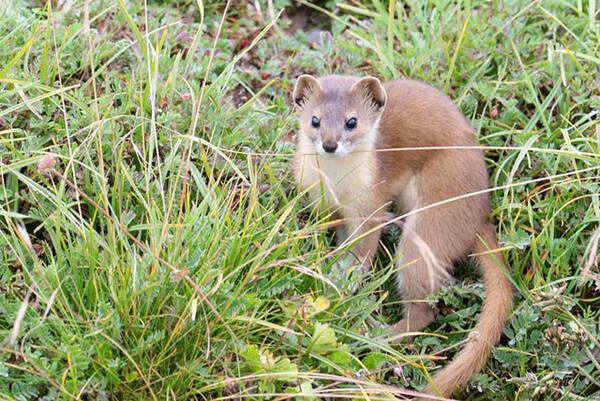Mustela lutreolina
IUCN
LCBasic Information
Scientific classification
- name:Mustela lutreolina
- Scientific Name:Mustela lutreolina,ndonesian Mountain Weasel,Javan weasel, Indonesian mountain weasel
- Outline:Carnivora
- Family:mustelae genus
Vital signs
- length:27-32cm
- Weight:295-340g
- lifetime:7-10years
Feature
The upper body has reddish brown fur, the lower body is slightly lighter
Distribution and Habitat
The Indonesian mountain weasel is found only in the highlands of Java and Sumatra, Indonesia. It is endemic to these islands and is native to the Oriental biogeographic region.
It lives in the western part of Java and the Ijang plateau in the far east. In Sumatra, it is found in the southern province of Bengkulu, north to Gunung Kerinci into Kerinci Seblat National Park, and to Gunung Leuser National Park at the northernmost tip of the island.
The Indonesian mountain weasel lives in the rainforest mountains of Indonesia. It prefers high altitudes, ranging from 1,400-3,000 meters above sea level. Little is known about the range at lower altitudes where the species can live.
Appearance
The Indonesian Mountain Weasel weighs 295-340 grams, has a head and tail length between 279-321 mm, and a tail length of about 136-170 mm. The Indonesian Mountain Weasel has very special and obvious mustel-like characteristics, with a slender body and short legs. This size allows them to get into anything they can get their heads into. An elongated body tends to have a similar metabolic rate to other mammals of the same size, which tend to lose heat faster due to their shape. The scalp has reddish-brown fur and an identifiable skull hole. This hole is located in the medial part of the brain, midway along the anterior-posterior axis, at the point where the brain attaches to the skull.
The body is slender and the limbs are short. The head is long and narrow, the ears are generally short and round, and the sense of smell and hearing are sensitive. The canine teeth are more developed and the cleft teeth are smaller; the upper molars are arranged horizontally, and the inner leaves are wi
Details
Indonesian Mountain Weasel (scientific name: Mustela lutreolina) Foreign name Indonesian Mountain Weasel, no subspecies.

Little is known about the behavior of the Indonesian Mountain Weasel. Other weasels tend to be solitary and nocturnal, interacting only for breeding or territorial disputes. Since the species has a solitary territorial mating system, the main concern of females is to defend the homeland that provides enough resources for their offspring. Males want to have as many females as possible living in their territories. Like other weasels, the Indonesian mountain weasel communicates mainly by scent, and secondarily by vocalization, using "clicks" or other auditory noises.
The Indonesian mountain weasel is completely carnivorous. It particularly likes to eat rodents. Their agility and speed allow them to kill prey much larger than themselves. They are also very good at catching rodents from burrows. The Indonesian mountain weasel will stay in the prey's nest during each hunt until all the inhabitants of the nest are completely eliminated.
The Indonesian mountain weasel reaches sexual maturity at about 1 year old. The breeding season is between March and May, and the gestation period is about 30 days. Like other weasels, the pups of the Indonesian mountain weasel are also small white weasels. Young weevils are born with their eyes closed, have little fur, and are completely dependent on their mother for care. It takes about a month for the pups' eyes to fully open, and another month for them to be fully weaned. For weevils, care of the young is entirely the responsibility of the mother. Weevils are fully weaned and leave their mother after 2 months. However, the pups tend to stay together until the fall. Lifespan 7-10 years.
There are no obvious potential major threats to the Indonesian mountain weevils. It lives above sea level in Sumatra, where harassment and trapping of ground mammals is common and deforestation is high. In the past, much of the natural habitat on Java has been lost in this elevation zone, and what remains are scattered patches, but the total area is relatively stable. There is no doubt that some Indonesian mountain weevils have fallen victim to non-selective hunting methods on both islands, but there is no reason to think that the numbers are high enough to affect its survival prospects.
Listed in the 2016 IUCN Red List of Threatened Species ver 3.1 - Least Concern (LC).
Protect wild animals and eliminate game.
Maintaining ecological balance is everyone's responsibility!








